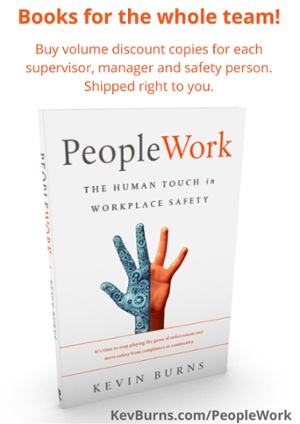The Tools of Safety Leaders
You have got to set aside time each day for your own tools and skills development.
Let’s start by saying that I have dedicated plenty of space to identifying the “traits of safety leaders” in past Blog posts. And as important as the traits of safety leaders are, the tools they use to develop those traits is even more important.
Good safety leaders are respected. And safety leaders understand the simple premise that “staff don’t work for you, you work for them.” The point of leadership is to help other grow. So when we see inexperienced or even wrong-thinking supervisors flexing their authority muscles at employees, you wonder how long a disliked and disrespected supervisor or safety person is going to last?
Employees want to have a reason to respect the supervisor and the safety person. And, even though that supervisor might now have a lot of experience, employees will respect a supervisor who admits that they are working on it.
The tool of mentorship.
The supervisor who empowers his or her people to take a leadership role, tend to get more respect than the supervisor or safety person who bark orders and rules. There is a wealth of experience in most teams. The key to managing that team well is knowing when to call on that experience. So, if you’re inexperienced as a supervisor, why not have your more senior crew members take on some of the responsibility?
Employees given the chance to put their experience to use, to mentor and coach others, tend to raise the level of their own participation. They engage better, have a better and more positive attitude. And they are more willing to help when a team member needs it. They become leaders in the truest sense of the word. And when given the chance to take center-stage, most people won’t take shortcuts. They will set the right example and do the right and safe things.
The tool of teamwork.
You see, if safety is a shared responsibility - and you know it is - then it can't always be up to only one person to call all the shots. If you’re preaching “team” then you have to think like a team. Sports teams don’t depend solely on the head coach for the win. There are assistant coaches, special teams coaches, team captains, alternate captains, and even dressing room leaders. Think like sports teams do and share the responsibility. It will help fill in the gaps of the formal training and the experience that you might be missing.
Let your folks step up and shine. They will respect you for the trust you have shown in them.
The tool of continuous learning.
Now, while you’re allowing your people to step up, what are you doing to boost your own skills? In the same way a roofer needs a roofing hammer, a carpenter needs a square, and a mechanic needs a wrench, you need good tools to be a good supervisor or safety person. Books are the tools of good supervisors.
 Good safety people and supervisors need to be able to depend on 3 things: judgement, knowledge and experience.
Good safety people and supervisors need to be able to depend on 3 things: judgement, knowledge and experience.
Now, a beginner can do an adequate job with just two of those skills. Judgement and knowledge can be acquired through reading the right books, watching the right videos, attending the right classes. Experience is what you gain through time on the job combined with good judgement and continuous learning.
You have got to set aside time each day for your own tools and skills development. Your time, not the company’s time. You are working on your career skills. You will take these skills with you if you ever leave the company.
Books and learning are the tools of effective leaders. Get the right tools, and you give your people a reason to like and respect you as a supervisor or a safety person. And if you haven’t read my book on making your people the center of your safety program, you should. Get your copy of PeopleWork now – or better yet, get one for every supervisor.
--
Learn more strategies to create a high-participation safety culture. Put Kevin Burns' expertise to work in your organization. Kevin Burns is the creator of the M4 Method™ and the 90-Day Safety Accelerator program. He is the author of PeopleWork: The Human Touch in Workplace Safety.
Get details and more information http://www.kevburns.com/contact


